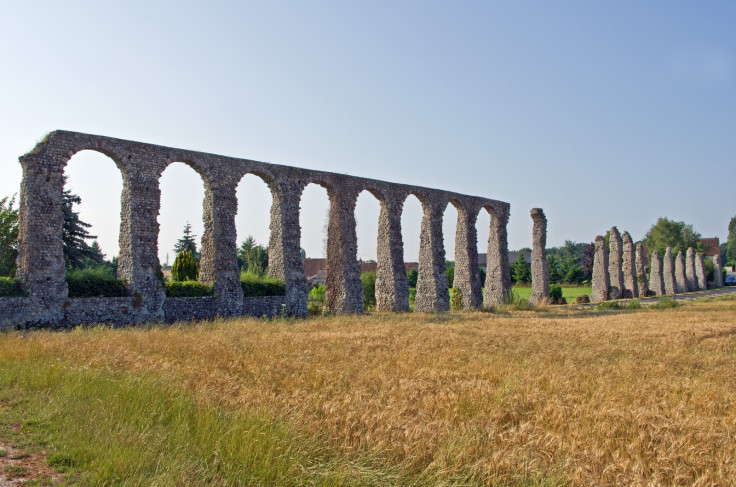Roman Empire's downfall could have been caused by a breakdown in trade and food supply

An international team of environmental scientists, hydrologists and ancient Rome experts has suggested that one of the factors that led to the downfall of the Roman Empire could be to do with how the ancient Romans managed their food supply amid rapid population growth and climate change.
Researchers from Utrecht University, Wageningen University and Stanford University have been studying civilisations of the past in order to understand how countries can better manage their food resources in a more sustainable way, despite being affected by both climate change and population growth.
Their research, entitled "A virtual water network of the Roman world" is published in the open access journal Hydrology and Earth System Sciences.
"We can learn much from investigating how past societies dealt with changes in their environment. For example, the Romans were confronted with managing their water resources in the face of population growth and urbanisation," said Brian Dermody, an environmental scientist from Utrecht University.
"To ensure the continued growth and stability of their civilisation, they had to guarantee a stable food supply to their cities, many located in water-poor regions."
A complex trade network to ensure all regions had food
The researchers used reconstructed maps of the Roman landscape and population to estimate where agricultural production and food demand were the greatest.
They realised that although the Romans invented innovative aqueduct water networks to irrigate their lands, because the Mediterranean weather was so variable from year to year, some regions would end up with poor crop yields and thus very little food, while other regions would have surplus food.
In order to meet food demands for the whole empire, the ancient Romans set up a trade network to import and export food to different parts of the empire.
As it takes between 1,000 to 2,000 litres of water in order to grow just 1kg (2.2lb) of grain, the researchers came up with a concept called "virtual water".
Basically if a region had to import food, it was almost like they were trading in the virtual water they hadn't had during that year, which had led to a bad yield.
Using a hydrological model to calculate grain yields and ORBIS, Stanford's virtual reconstruction of the Roman world, the researchers were able to simulate the trade in grain and how the water management structure evolved to meet food demands.
An overdependence on trade is not wise
"In the short term, importing virtual water is effective as you could redistribute the food if some regions had low yield some years, but when the whole system is integrated and you approach the boundary, if something goes wrong, the whole system can collapse," Dermody told IBTimes UK.
"Trade is important to feed the people and the networks can break down due to socio-political reasons. In the long term, the urbanisation and rapid populations, pushed the Roman Empire to its limits in meeting food demands."
During ancient Roman times, over 90% of the water would have been used for agriculture and food.
In Egypt, the Nile's irrigation capabilities meant that the country had a very stable food supply, which would have made Egypt very attractive as a conquest, so that food could be exported back to Rome to meet population explosion, particularly in urban areas.
Dermody said: "We're confronted with a very similar scenario today. Virtual water trade has enabled rapid population growth and urbanisation since the beginning of the industrial revolution. However, as we move closer to the limits of the planet's resources, our vulnerability to poor yields arising from climate change increases."
© Copyright IBTimes 2025. All rights reserved.






















